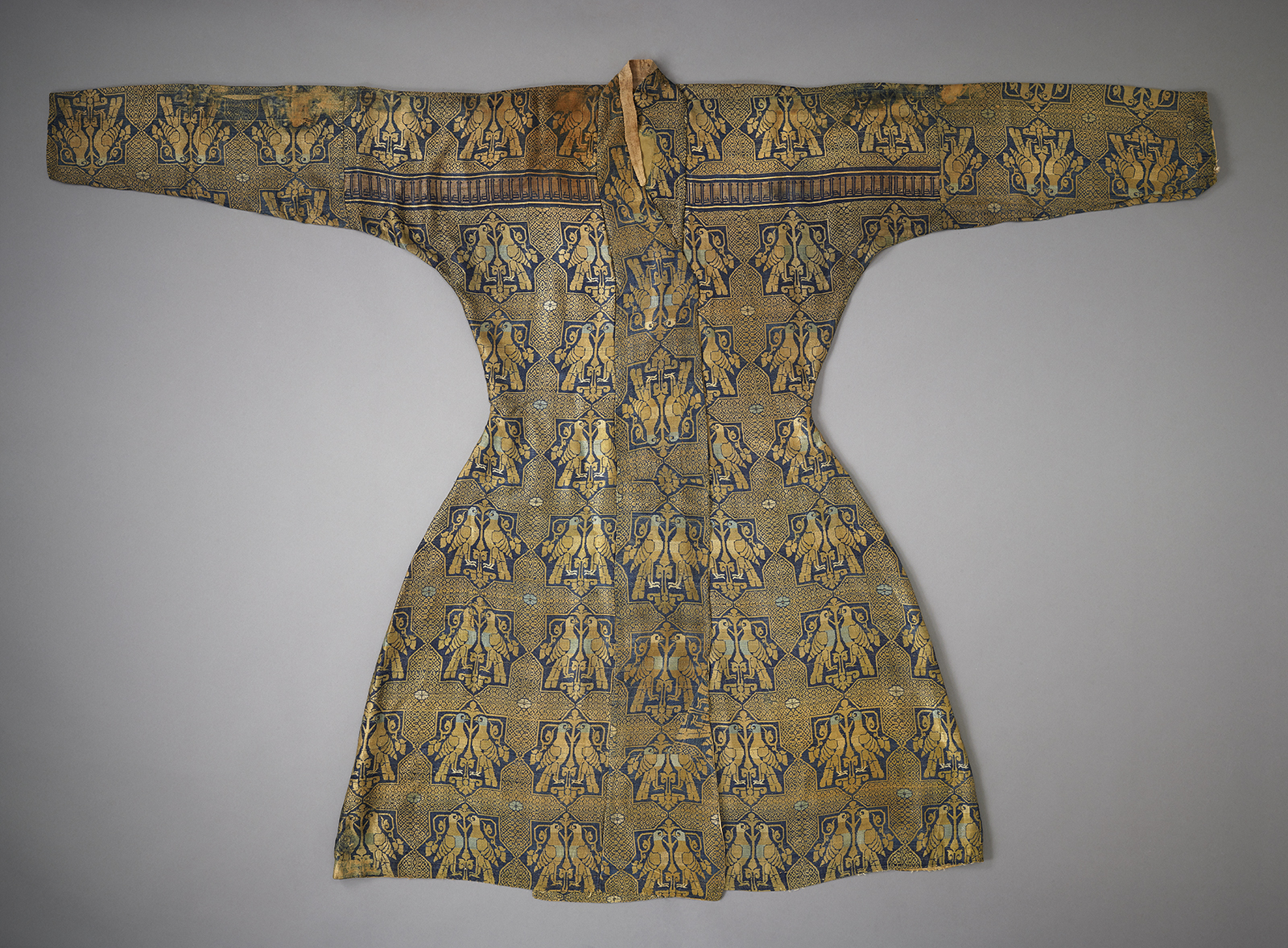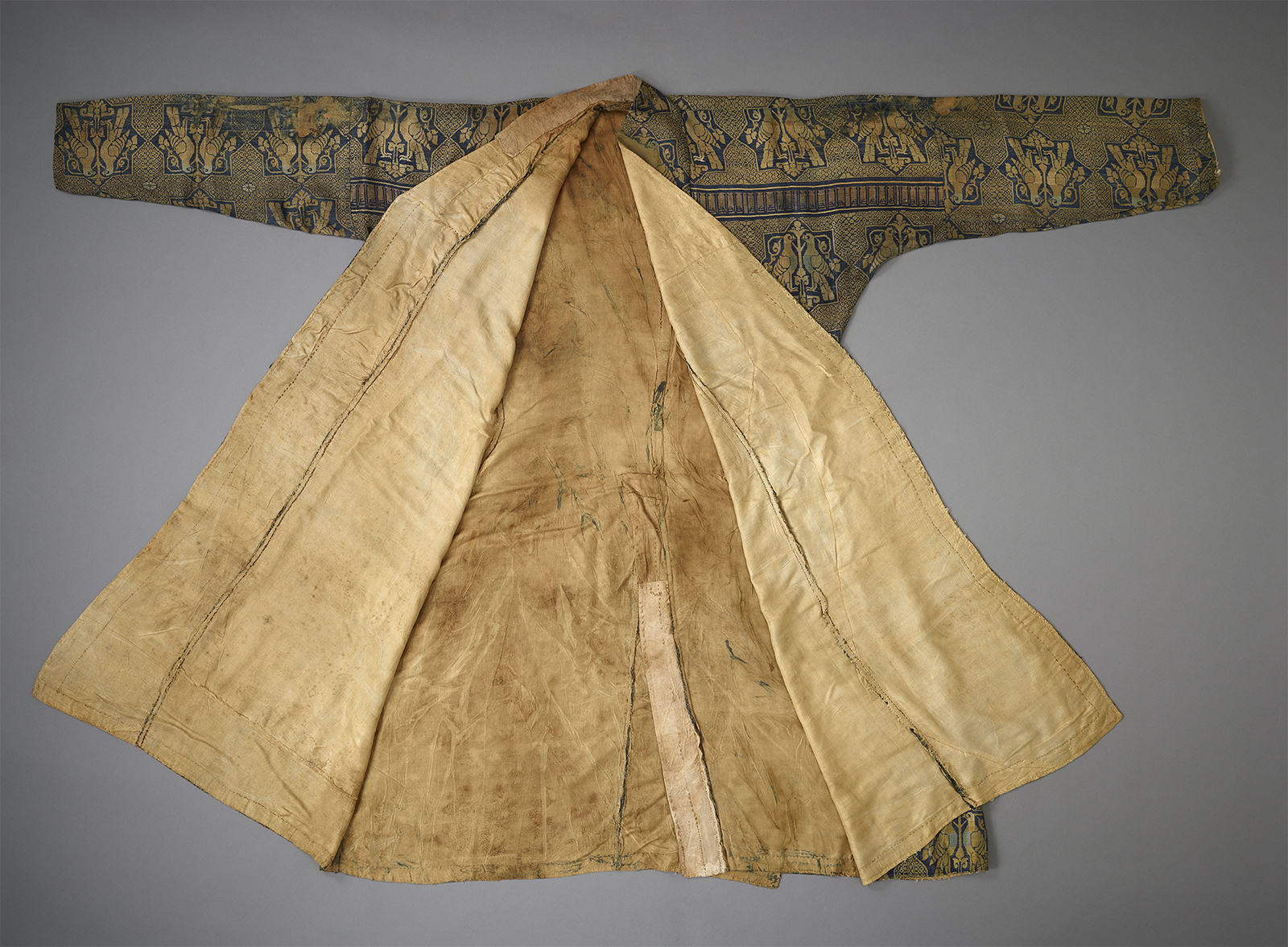Click on the image to zoom
Robe
- Accession Number:AKM816
- Place:Central Asia
- Dimensions:142 cm
- Date:13th century
- Materials and Technique:silk, woven
This is an extremely rare example of a complete medieval woven silk robe. Luxurious robes were highly valued in trade and often presented as diplomatic gifts, but due to the fragility of textiles, most of what survives is fragmentary. The exchange of "cloth of gold" (nasij) long practised by Umayyad rulers became more widespread following the Mongol invasions of Iran and Iraq in the early 13th century, when three artisan communities were relocated from Khorasan and Turkestan to Mongol-ruled China. In China—the centre for silk production—robes would come to symbolize the empire’s strength and enduring power.
- Filiz Çakır Phillip and Suzanne Conklin Akbari
Note: This online resource is reviewed and updated on an ongoing basis. We are committed to improving this information and will revise and update knowledge about this object as it becomes available.




